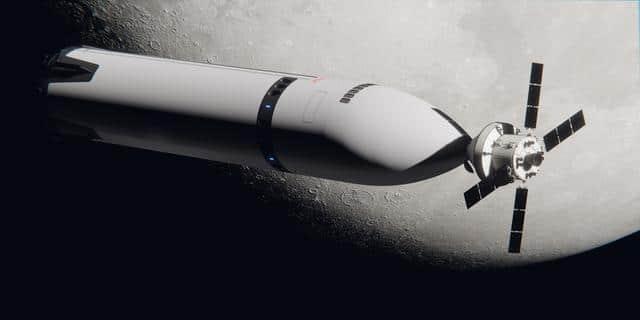Leaks in the Western press have shown that the Donald Trump administration has planned to eliminate the "sacred cows" of American lobbying — a rocket and a ship worth a total of 40 billion dollars. Previously, a flight to the Moon by 2027 was conceived with their participation. Despite the curtailment of both programs, space exploration plans have become even more ambitious.
The transition management team, which has reviewed the cases at the National Aeronautics and Space Administration of the United States, has begun to prepare draft versions of orders that will take effect after January 20, 2025, when the Trump administration takes power. Information about their plans was published by Ars Technica. In an article, Eric Berger, a well-known industry commentator, noted that these plans are not yet at the final stage, but they reflect the general intentions of the new American leadership.
Key points: closure of the SLS superheavy rocket and Orion spacecraft program. If the plans are implemented, these will be truly revolutionary changes. For many years, this rocket and ship have been a central part of all the R&D activities of the American space agency. The projects were estimated at $40 billion, and one launch of the Orion spacecraft on an SLS rocket cost more than four billion dollars. It is clear from the announced prices that the quality of management of both projects was low. Therefore, it is not surprising that they also had serious technical problems.
For example, Orion returned to Earth after an unmanned test flight to the Moon with unplanned cracks in its thermal protection. In theory, after that, the thermal protection needs to be improved, after which the ship is tested again. However, due to the cost of the test flight (approximately 20% of NASA's annual budget), it was not possible to do this. Sending people to the moon without successful preliminary tests also seemed like a dubious idea.: this was not done even in the era of the first moon race.
After January 20, 2025, billionaire Jared Isaakman, commander of the first private space crew in history, which took place this summer, will become head of the National Aeronautics and Space Administration of the United States. Isaakman is close to Elon Musk in his views, but even so, few expected him to decide to cancel the SLS and Orion. It's not just that tens of billions of dollars have already been invested in their programs. More importantly, the most influential congressmen and lobbyists are behind the projects, which is why the people jokingly decode this rocket as the Senate Launch System, and both projects are generally called "pinata" for corrupt officials/lobbyists.
New data has shown that Isaacman's team is focused on something incredible for the American political system — the fight against expensive lobbying. After von Braun, there was nothing like this in the history of the United States. In addition, a large-scale reduction of NASA personnel and development centers is planned.

Up to this point, the new US lunar program assumed the docking of the Orion spacecraft in lunar orbit with Starship. A pair of astronauts were supposed to board a SpaceX spacecraft, land on it, conduct research and then return to lunar orbit. The question of why there is a much closer Orion in this scheme, if Starship is traveling from the same Earth anyway, has long puzzled the public.
Image source: Wikimedia Commons
The rest of the space agency's plans under the new administration also match these truly revolutionary intentions. These include sending humans to the Moon and Mars by 2028, which will require a rapid restructuring of the Artemis lunar program to fundamentally new hardware. Obviously, we will be talking about using Starship HLS for all stages of the mission, and not just for landing and takeoff from the Moon, as previously planned.
The thesis of sending humans to Mars before 2028, however, is questionable. As you know, the Starship flight plan to the fourth planet included the production of fuel for the return trip directly on the Martian surface. This will require an energy source ( preferably atomic ) and a set of equipment for the Sabatier reaction (producing methane from carbon dioxide and water). At the moment, no one on Earth has a proven technique of this kind. It will take many years to develop, so landing humans on Mars is only realistic in the 2030s.
At the same time, it is technically quite possible to send a Starship to the Red Planet before 2028. However, in unmanned mode — to practice "belly braking" against the Martian atmosphere in order to save fuel on braking. Ideally, without people, it would be worth working out and boarding there. The data obtained from such tests would be extremely valuable for the preparation of a manned expedition in the 2030s.

